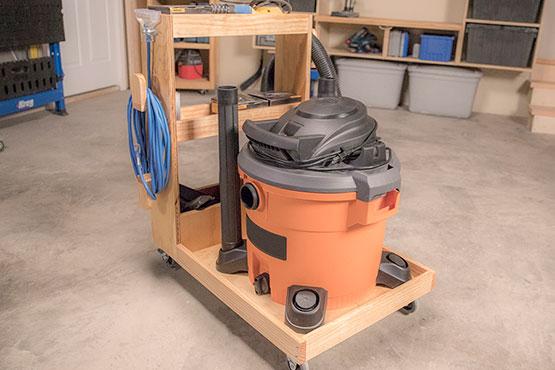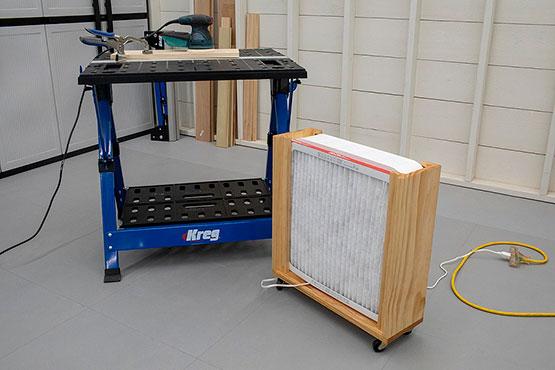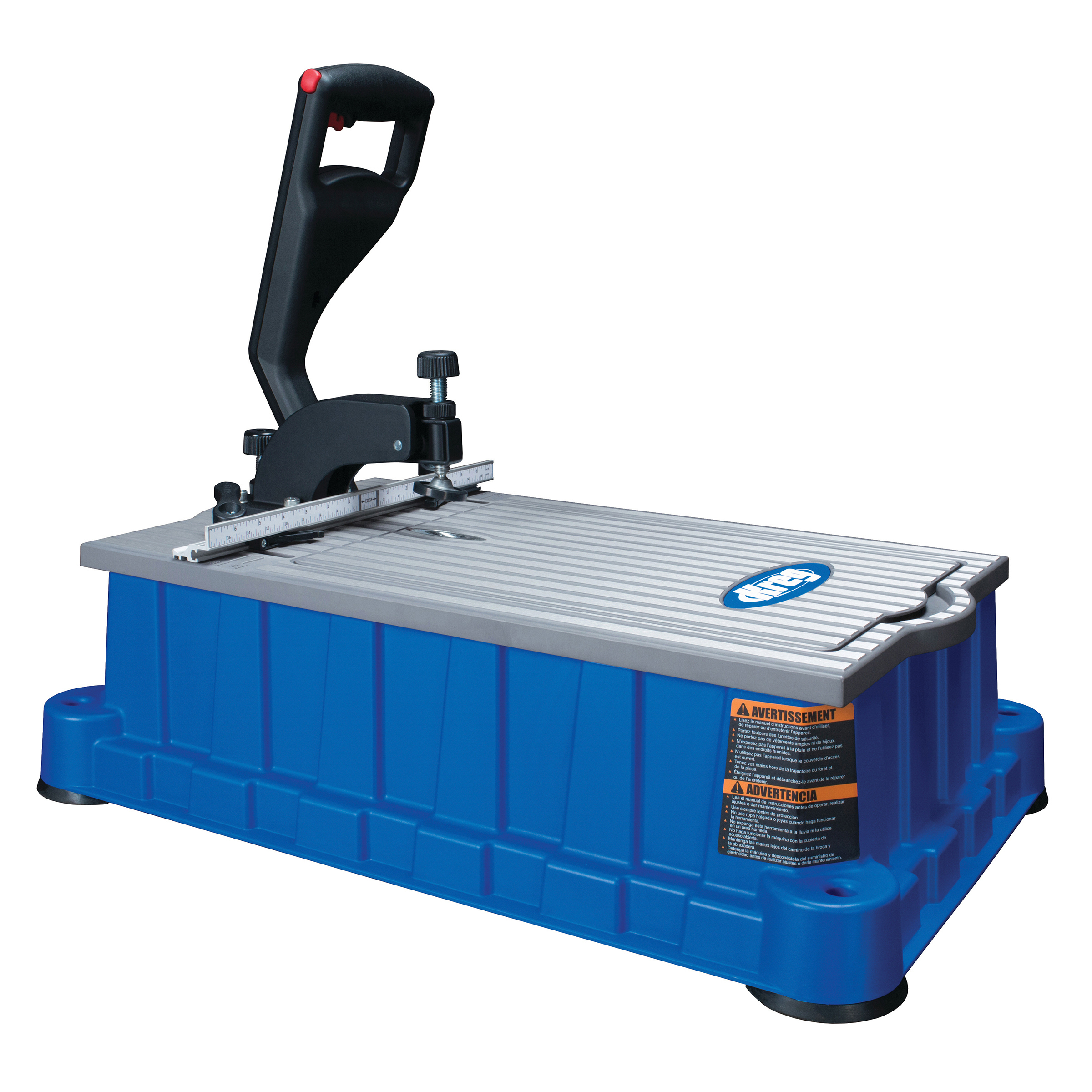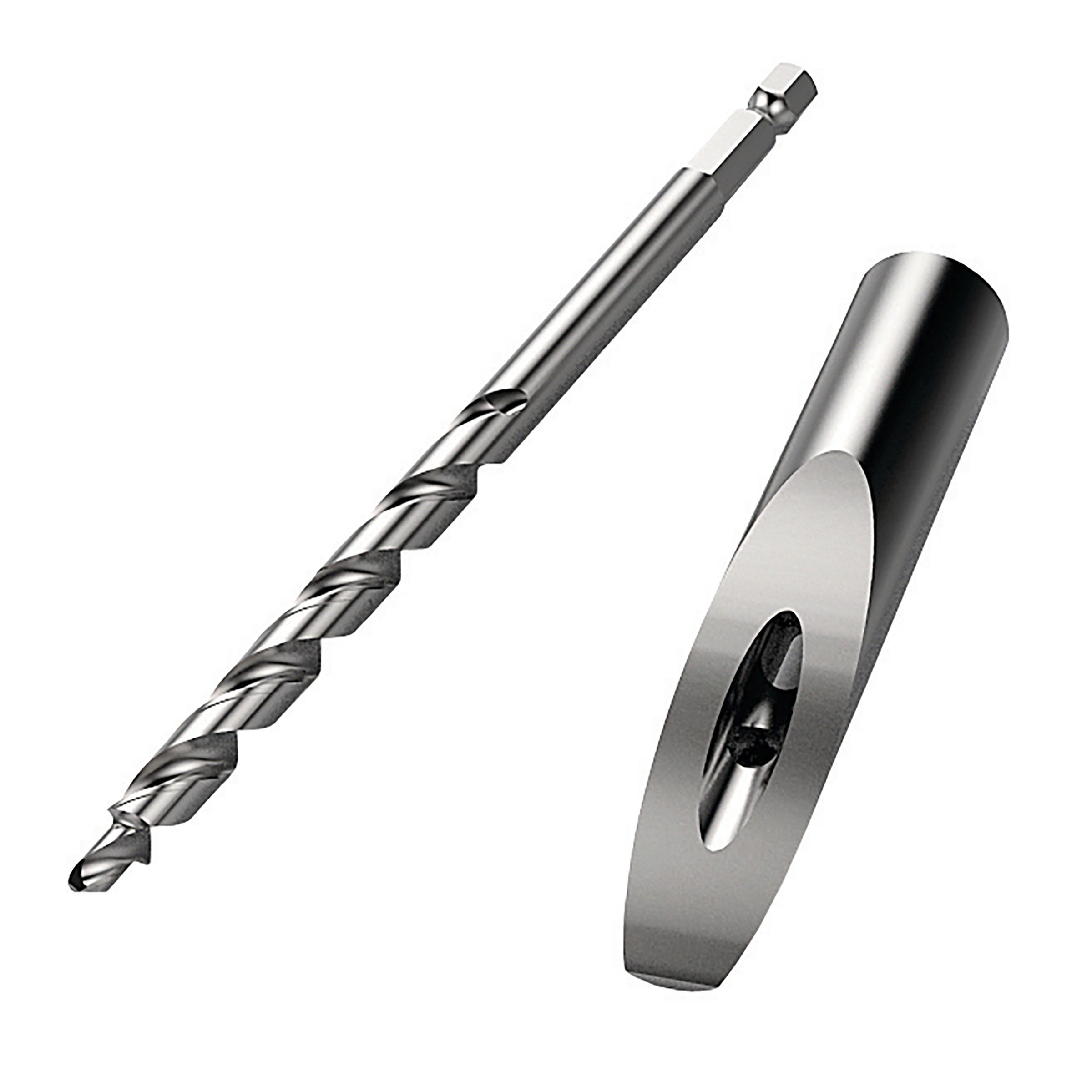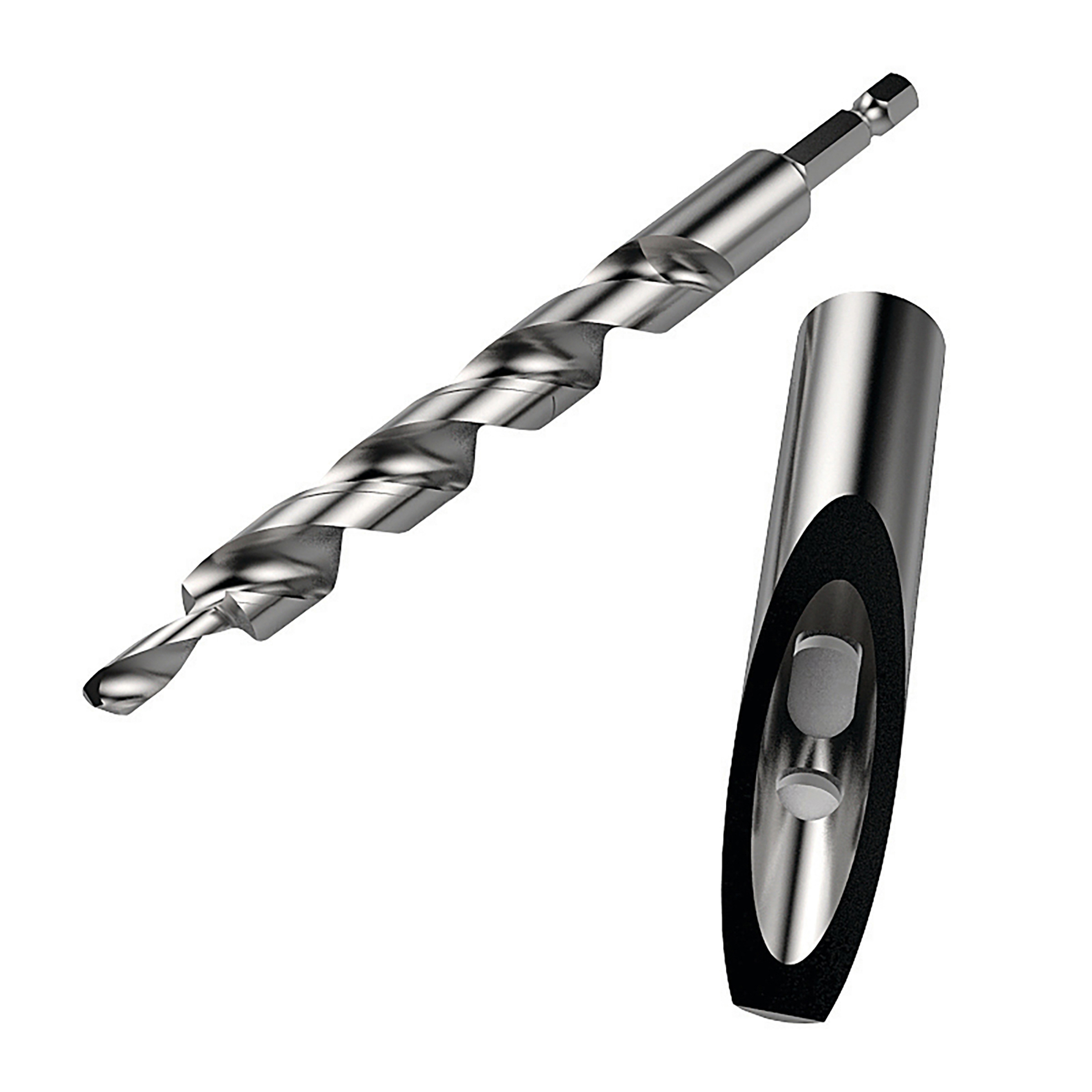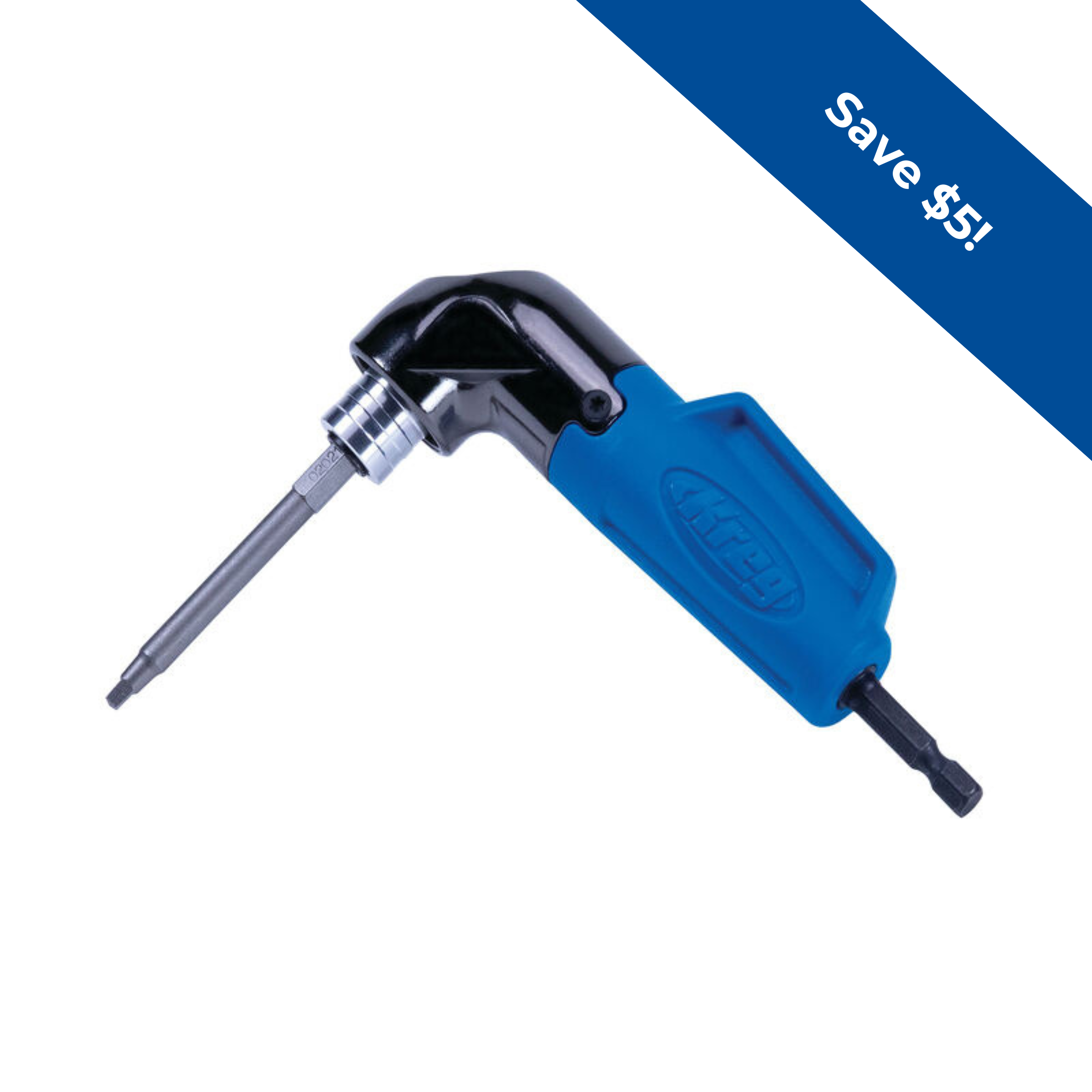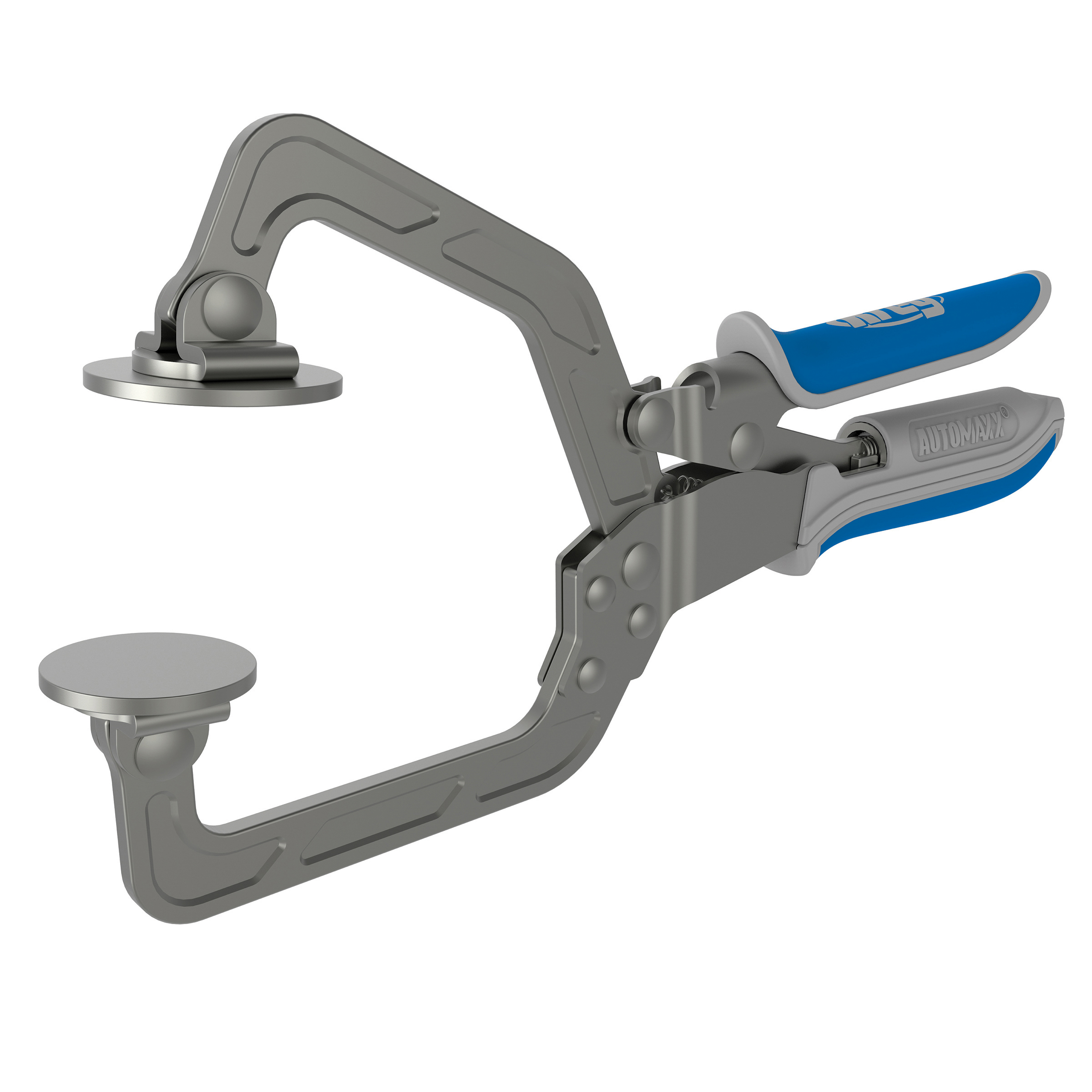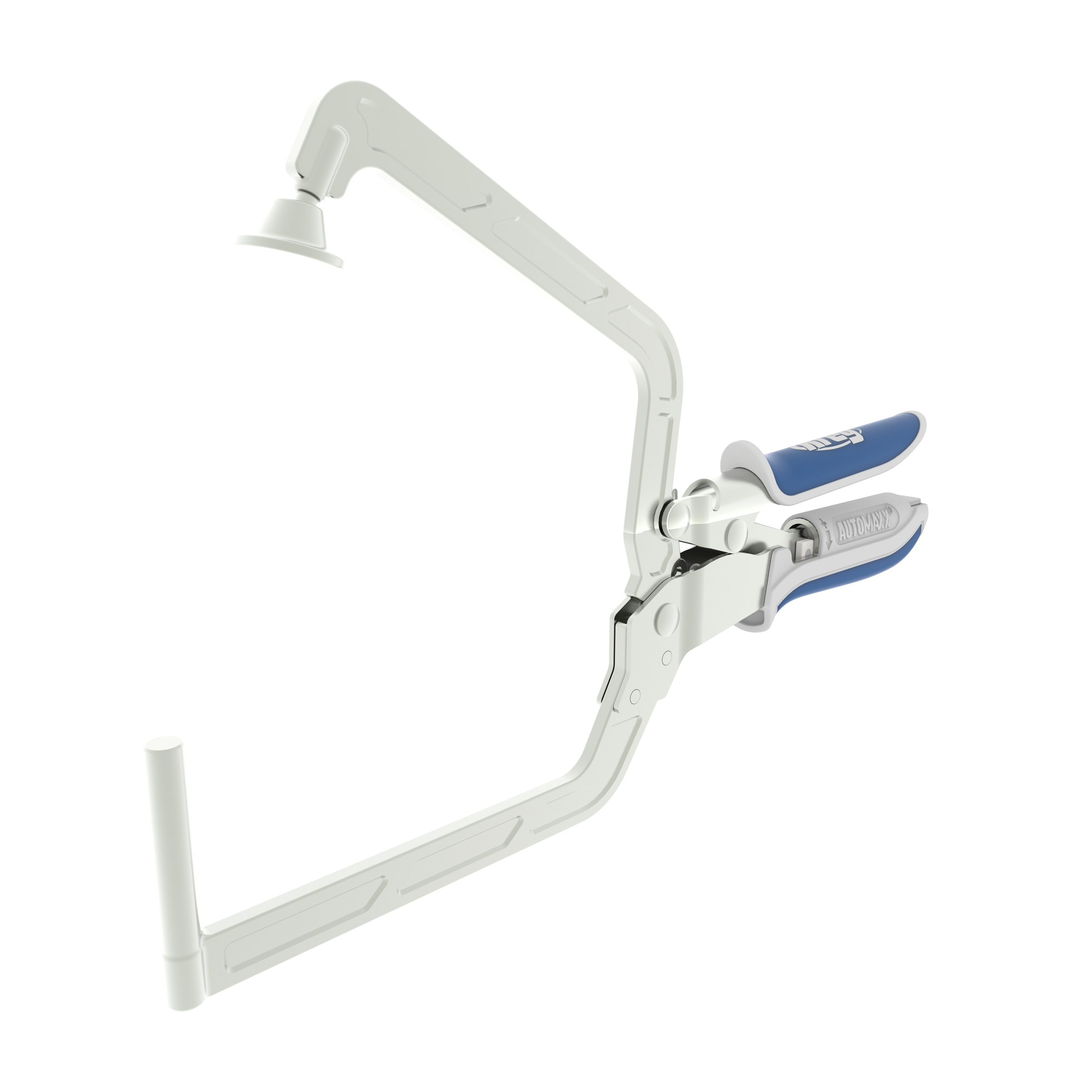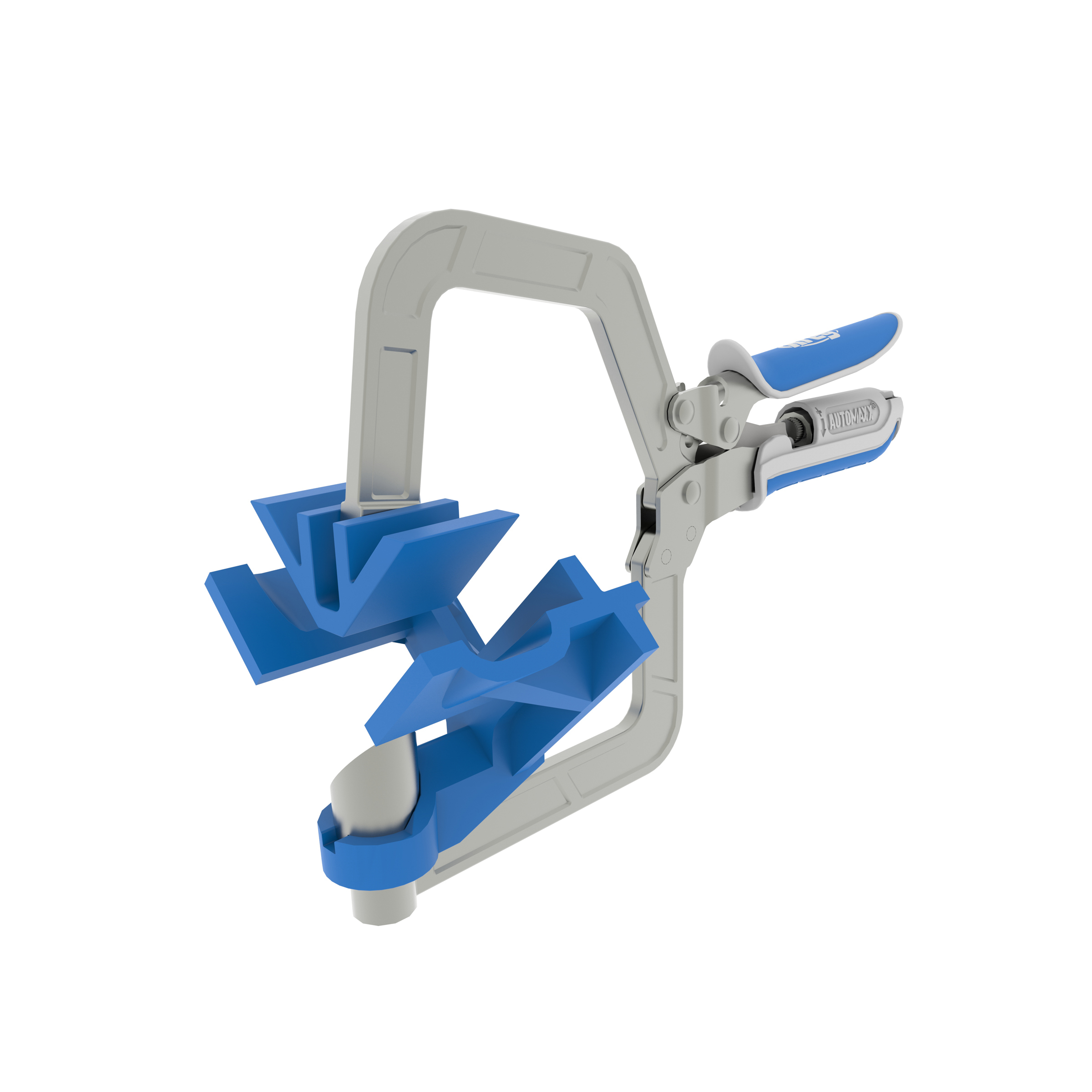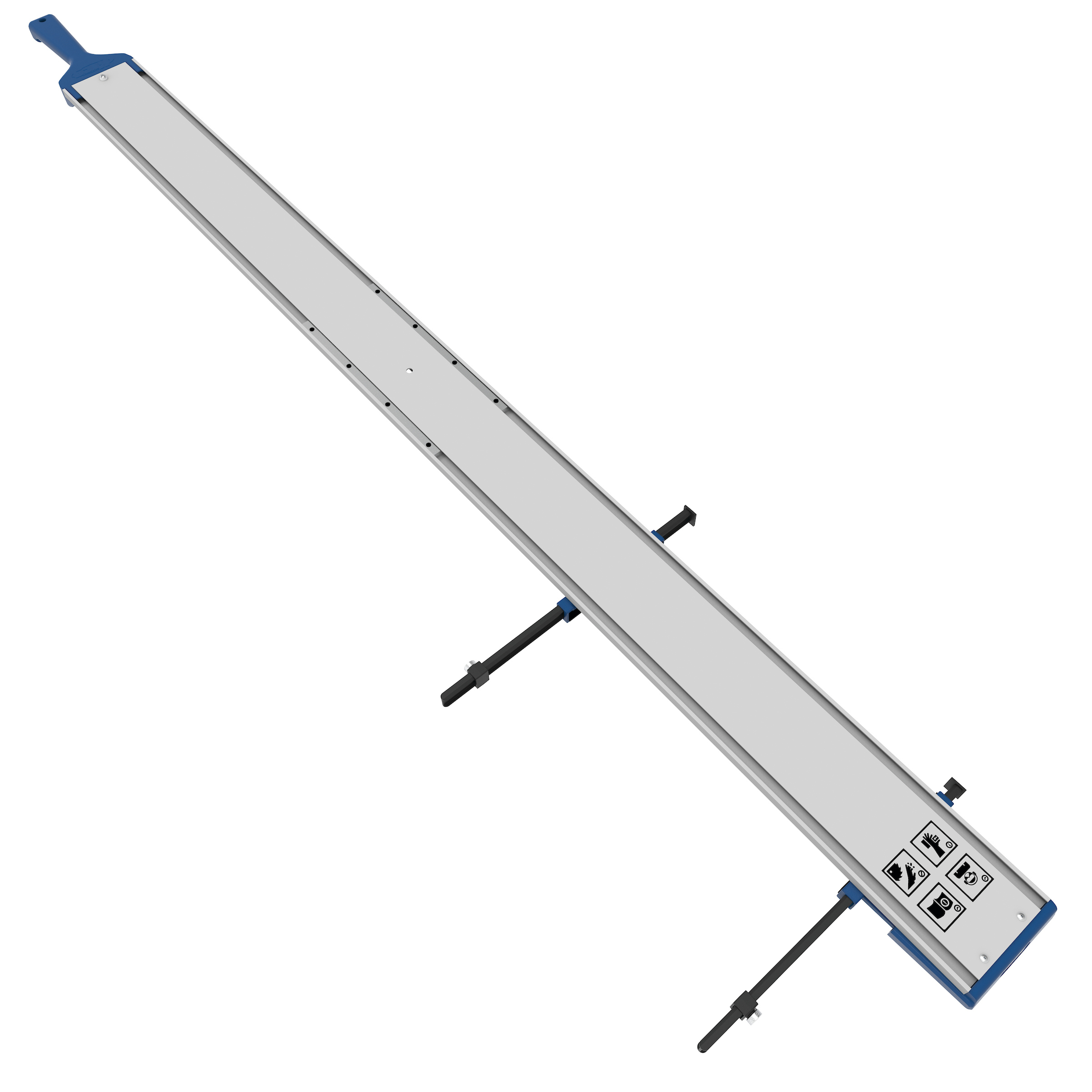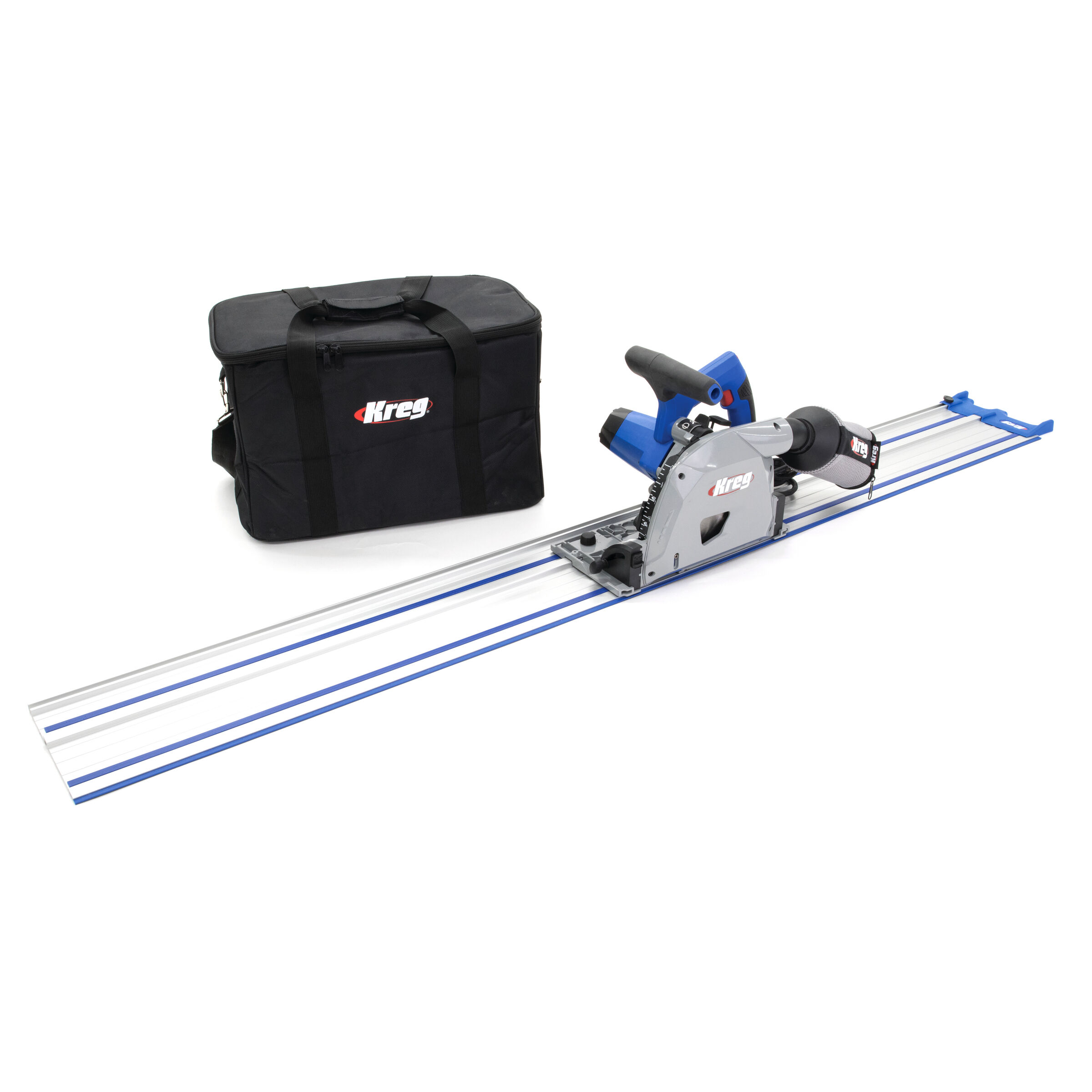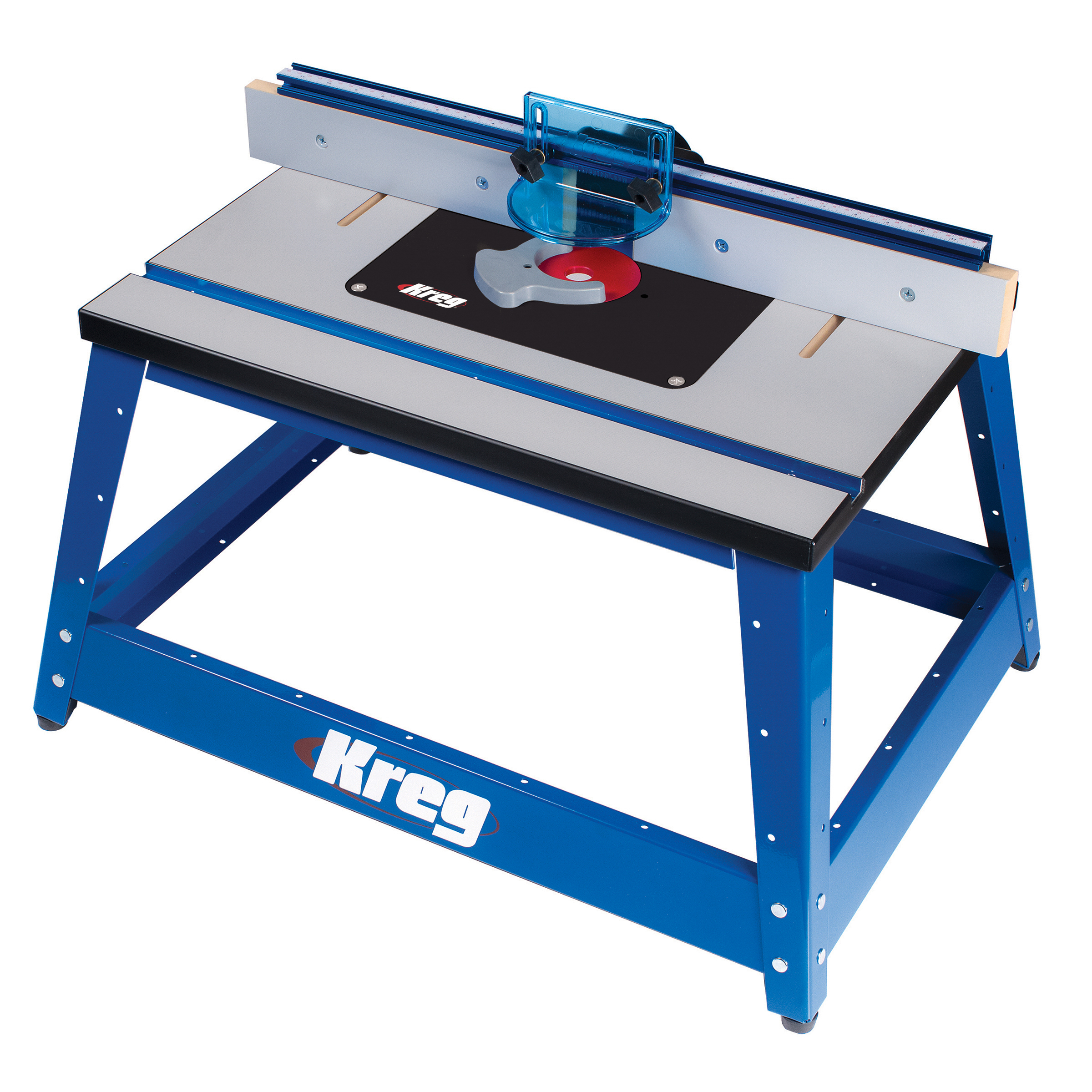Pocket-hole joinery is designed to be fast and easy—and it is. Just drill a pocket hole, drive a screw, and you’re done. When you get serious about building with pocket-hole joints, though, you realize that some projects require drilling a lot of holes. When you reach that point, you can make using pocket-hole joinery even easier by stepping up to a pocket-hole machine, like our Kreg Foreman.
Create pocket holes super fast
Drilling one pocket-hole fast is impressive, but when you multiply that by the number of pocket holes that can be required to build a project, the advantages of the Foreman become apparent quickly. Just place your workpiece on the table surface, squeeze the trigger on the handle, and pull. That’s all it takes to create a pocket-hole.
See it in action!
With the Foreman you’ll be able work faster, so you can build more projects in less time. Check out this video to see how quickly we drilled all the pocket holes for a small wall cabinet with a face frame.
Features designed for speed, accuracy, and versatility
Now that you’ve seen how fast the Foreman is, let’s take a closer look at the features that make fast pocket-hole drilling possible.
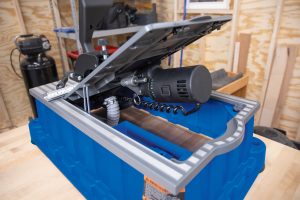
Powerful drilling performance
The biggest feature that separates the Foreman from our standard pocket hole jig is the built-in high-RPM drill motor. It’s powerful and spins at 2,800 rpm, which is twice as fast as most cordless drills. So, the Foreman drills holes faster and cleaner than a normal drill and jig alone.

Large work surface
The Foreman’s cast-aluminum table is super sturdy. At 14″ x 23½”, the table supports your workpiece easily, whether it’s a small board or a large plywood panel. That means you never have to struggle with holding the piece in position as you drill.
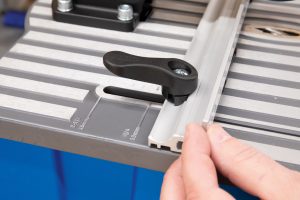
Multifunction fence
With the Foreman, all you do to position your workpiece is push it against the fence. Also made from aluminum, this fence moves to handle materials from ½” to 1½” thick. Thickness marks in the table top make setup simple. Large locking levers ensure that the fence stays put no matter how many holes you need to drill.
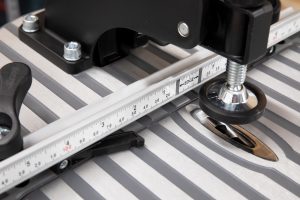
The Foreman fence also helps you in a couple ways to position your pocket holes where you want them.
First, there’s a measuring scale with zero at the drill bit location. That makes it really easy to position your workpiece exactly where you want to drill. The scale measures 7″ outward from center in both directions, too, so you can tell easily how far you’re moving your workpiece each time.
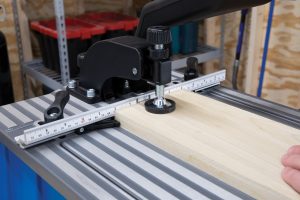
The Foreman fence also incorporates two spring-loaded stops. You can position them anywhere along the fence to simplify repeat drilling of holes in the same position. And, even when you have the stops set, you can simply override them by pushing your workpiece against the fence to make the stops retract.
See it in action!
The retractable stops on the Foreman fence are easy to set using the included hex wrench. The stops are there when you need them, and they push out of the way when you don’t.
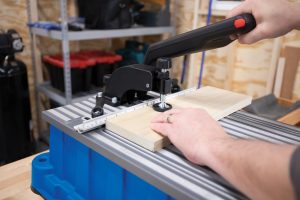
Efficient one-motion operation
With a regular pocket-hole jig, you clamp the workpiece, then drill, and then release the clamp to remove or move your workpiece. The Foreman clamps your workpiece for you as you drill, and then releases it when you’re done. That saves a couple steps on every hole. And those saved steps add up fast.
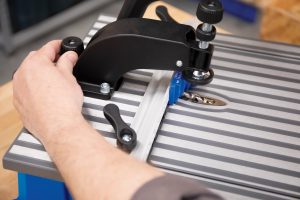
Fast, simple setup
Drilling to the right depth for your material is a critical part of creating pocket holes. The Foreman makes setting that depth easy. Just use the bit setup block, and then lock in your bit setting to hold the correct depth consistently hole after hole.
See it in action!
Setting the Foreman for your material thickness takes just a couple easy steps. First, use the setup block to set the proper drilling depth. Then set the clamp pad so your workpiece will slide under without getting caught by the pad.
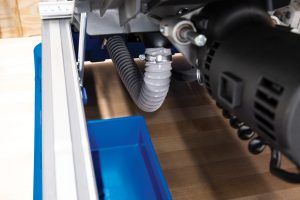
Built-in dust collection
Another way the Foreman makes drilling pocket holes faster is with effective dust collection. It cuts down on the mess, which saves you cleanup time, but also does more. Getting chips out of the way keeps the pocket-hole drill bit from clogging, so it drills faster, runs cooler, and stays sharp longer. Chips exit the back of the Foreman where you can connect any vacuum hose.
Quick Tip: Save another step with a tool-activated outlet
Sound on!
What’s better than having your shop vacuum suck up all your chips? Having it turn on automatically when you drill. Just pick up a tool-activated outlet, and then plug your Foreman into one receptacle and your vacuum into the other. Every time you squeeze the trigger and the Foreman turns on, the vacuum will kick on, too. And the outlet leaves the vacuum powered on for a few seconds to continue clearing chips after the Foreman shuts off. By the way, if you’d like to build this shop-vacuum cart, you’ll find a link in “Related Plans” at the end of this article.
Big versatility in a compact, portable package
A lot of woodworking tools with the capability of the Foreman are big, stationary machines meant for commercial woodworking shops. We know because we make a line of commercial machines that are used in factories and cabinet shops, too, and they inspired the design and functionality of the Foreman.
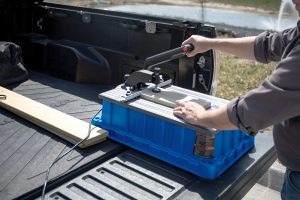
Take cabinet-shop capability anywhere
The Foreman is compact enough for anybody’s woodworking or DIY shop. In fact, you don’t even need a shop. Anywhere you can plug into an outlet, you can put the Foreman to work making you a more-efficient builder.
The cast-aluminum table surface keeps weight down without sacrificing strength or flatness. At 20 pounds, the Foreman is easy to move around, and you can do it without fear of damage because of the machine’s impact-resistant base. The Foreman stays put, though, thanks to big, non-slip feet that also dampen vibration.

Build projects with more kinds of pocket holes
The Foreman isn’t just more portable than our commercial machines. It also can do something even those machines can’t: create pocket holes in all three of our sizes. You’ll get a standard-size pocket-hole drill bit with the machine. But you can also get the smaller Micro-Pocket™ bit and our larger XL bit.
It’s pretty easy to see that the Foreman offers a lot of advantages. If you find that you’re spending a lot of time drilling pocket holes for your project, it’s pretty easy to justify adding a portable, versatile machine like this one to your list of must-have tools.






